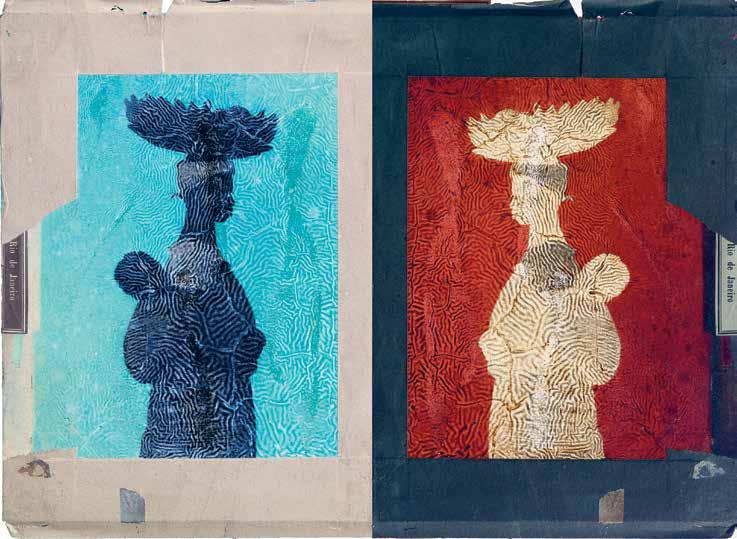VISIBLE AND INVISIBLE
Records verifying the existence of enslaved men and women in São Paulo date back to the beginning of colonisation. However, in the 16th and 17th centuries, and for much of the 18th century, the presence of Africans was immaterial, mostly because of widespread multi-crop agriculture for subsistence purposes, which was largely based on indigenous labour. The distinction between the two workforces was so pronounced that the latter were known as ‘Negroes from the land’, while Africans were called ‘Negroes from Guinea’ or ‘Negroes from Angola’. As early as the 1540s, the Captaincy of São Vicente imported slaves from Guinea to complement the indigenous workforce used in sugar production. However, in comparison with the competing large-scale plantations in Pernambuco and Bahia, the presence of enslaved labour in the capital of São Paulo remained discreet. According to data from that era, in 1765, São Paulo’s total population was 20,873 people, of whom 5,988 or 28.6% were enslaved. These figures did not vary greatly during the whole of the 1700s. Based on the 3,398 death records found in São Paulo’s Metropolitan Curia Archives, 489 deceased slaves in the capital of the Province and its surrounding areas were identified as ‘slaves from Guinea’, which is where the majority of local Africans came from. In any case, it is clear that at this point São Paulo was less a place of landing and settling and more a place of passage for Africans. In the first half of the 18th century, the majority of Africans registered in the Province were heading to the mines of Minas Gerais, Mato Grosso or Goiás. It was only in the second half of the 18th century that there was a significant increase in the numbers of enslaved people, mainly due to recession in the mining economy. However, the Province’s economy was still based on a budding agriculture mainly for exports, and was therefore not a particularly attractive place for slave traders. São Paulo was known as a place organised around smallholdings, which were maintained by a small number of captives, who were usually busy with
VISÍVEL E INVISÍVEL lilia moritz schwarcz
Registros sobre a existência de escravizados e escravizadas em São Paulo remontam aos primórdios da colonização. Nos séculos xvi e xvii, e na maior parte do xviii, a presença de africanos era basicamente inexpressiva, sobretudo devido à prática da policultura voltada para a subsistência, largamente baseada na mão de obra indígena. A divisão era tão marcada que esses últimos eram conhecidos como “negros da terra”, enquanto que os africanos eram denominados “negros da Guiné” ou “negros d’Angola”. A Capitania de São Vicente, na década de 1540, chegou até a importar escravos da Guiné para complementar o trabalho indígena utilizado na produção açucareira. Diante da competição com a grande lavoura de Pernambuco e da Bahia, porém, a presença de escravizados na capital paulista continuou discreta. Segundo dados da época, em 1765 a população total de São Paulo era de 20.873 pessoas, das quais 5.988 eram escravos, ou seja, 28,6%, taxa que não variou muito durante todo o período setecentista. Tomando como base os 3.398 registros de óbitos localizados no Arquivo da Cúria Metropolitana de São Paulo, nesse mesmo contexto, pode-se afirmar que 489 cativos falecidos na capital da Província e arredores foram identificados como “escravos provenientes da Guiné”, local de onde vieram, aliás, a maior parte dos africanos locais. De toda maneira, o certo é que, nesse momento, São Paulo era antes lugar de passagem; não de pouso e parada. Na primeira metade do século xviii, a maior parte dos africanos registrados na Província tinham como direção as minas das Gerais, o Mato Grosso ou Goiás. Foi só a partir da segunda metade do século xviii que a população escravizada contou com um aumento significativo, sobretudo por conta do refluxo da economia mineradora. A Província continuava praticando, no entanto, uma economia agroexportadora incipiente, o que fazia dela um local pouco inte47












